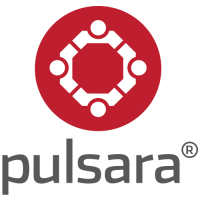The following is paid content sponsored by Pulsara
By Drew Rinella for EMS1 BrandFocus
Specialty patients present unique challenges to EMS providers in the field. Rarely encountered medical conditions, unusual medical devices and treatments, and morbid obesity all require different considerations from that of the routine 911 call. Here are 10 things you need to know about managing resources for specialty patients:
1.Home health care is growing in popularity.
With the ever increasing cost of health care, home care services are becoming an affordable alternative to residency at skilled nursing facilities. While the cost of private nursing home care has risen at a rate of around 4 percent annually, the cost of in home care has only risen approximately 1 percent per year. This savings has created an increasinglypopular incentive for the disabled and specialty patient to remain at home, increasing their likelihood of needing EMS assistance at some point.
2.The patient is often the best resource for information on their special condition or device.
It is impossible to be an expert in every special condition or medical device you will encounter in the field. Patients and their family members, however, are often well versed in the management of the rare medical conditions affecting them. For example, patients receiving Left Ventricular Assist Devices undergo rigorous training in the troubleshooting of their life-saving medical appliance prior to hospital discharge.
3.Specialty hotlines exist for some medical devices.
OLMC isn’t your only resource for help in unusual situations. Ask your patient if they have been given a hot line number to receive troubleshooting help with their potentially malfunctioning medical device. If your local protocols permit, utilize this avenue for advice on appropriate treatment and transport destination. In some cases, it may even be appropriate to contact the clinical manager of the device manufacturer.
4.Your local hospital may not be the most appropriate destination.
If local protocols permit, consider bypassing the closest facility if it is not equipped to handle your patient. Bariatric beds, pediatricians, and mechanical heart specialists are examples of services which may not be available at smaller hospitals. Initial transport to an inappropriate facility delays the definitive care of your patient, and increases overall cost to the patient and their family in the form of bills for redundant hospital exams and ambulance transport flat rates.
5.Hoof beats are sometimes zebras.
Consider other causes of the patient’s problem rather than focusing solely on the medical device or chronic condition. Just because a patient suffers from a known ailment doesn’t mean a completely unrelated problem can’t pop up acutely. Remember good assessment skills and always be alert to other possible sources of the patient’s problem.
6.Anxiety is a powerful factor at play.
Don’t discount the significant role emotional stress plays in the condition of the specialty patient. The chronic conditions these patients suffer from, with their lives sometimes completely dependent on the proper functioning of a complex medical device, like an LVAD or a defibrillation vest, can be overwhelmingly stressful to the point of causing panic attacks. With physical symptoms like shortness of breath and heart palpitations, it can be difficult to tell if the patient is having anxiety, an exacerbation of their medical problem, or both. Management of anxiety should be part of a comprehensive approach to the treatment of these patients.
7.Not every patient needs to be transported.
Try to find out why exactly you were called. Some basic comfort needs can and should be treated without transport. The caregiver of the ground-level-fall hospice patient may simply need some reassurance, and help with getting the patient cleaned up and put back into bed. In some states, EMS providers may be called upon to provide symptom control to terminally ill patients in the process of committing physician assisted suicide, who would similarly not benefit from ambulance transport.
In situations where the moving of a patient could result in unnecessary hazards to field personnel, such as the non-emergency transport of a non-ambulatory bariatric patient to a routine office exam, consider a safer alternative course of action, such as contacting the patient’s physician to inquire if the appointment can be conducted by proxy through on-scene EMS providers. Physical exams can be performed at the direction of the patient’s medical doctor by cell phone or video chat, and providers can draw blood and transport the vials to the physician’s office without risking career-ending back injuries.
8.Mobile Integrated Healthcare is uniquely suited for specialty patients.
If your agency utilizes a mobile integrated healthcare model, consider referring your specialty patient to MIH personnel. Even if your agency does not have an official MIH program, field providers can still help to prevent unnecessary 911 calls in some cases by visiting specialty patients during times of low call volume.
9.Plan ahead for success.
Having a plan in place now makes for a smoothly run operation later. This starts with identification of special needs within your EMS system, and training to meet the need when it arises. Planning now for the inevitable transport of your bariatric shut-in patient can increase operational efficiency, and reduce risk of injury to the providers involved. Quality assurance managers complete the loop by selecting these unusual specialty patient calls for case review, and encouraging the free exchange of ideas for how to handle similar situations in the future.
10.Specialty equipment is available.
Encourage your agency’s administrators to evaluate the appropriateness of specialty equipment for your system. Some equipment, such as bariatric ramps, winches and stretchers, justify their own costs with the first major injury prevented. Agencies should also ensure that providers have access to cellphones or sat phones for contacting emergency hotlines and other resources for advice on rarely encountered specialty patient situations.
About the Author
Drew Rinella is the clinical coordinator for Bonner County EMS in rural North Idaho. He is a paramedic, public servant, and competition shooter. Drew is an advocate for quality in EMS and also blogs his crusade against bad EKGs in product advertising.












